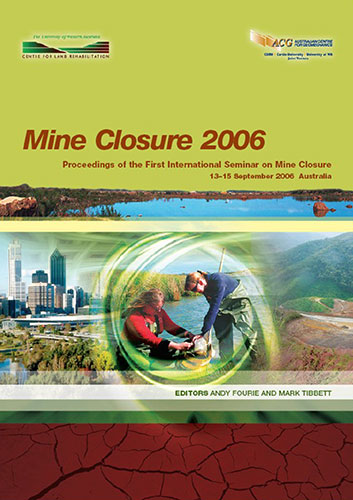Integrated Mine Closure Planning

|
Authors: Fleury, A; Parsons, AS |
DOI https://doi.org/10.36487/ACG_repo/605_14
Cite As:
Fleury, A & Parsons, AS 2006, 'Integrated Mine Closure Planning', in AB Fourie & M Tibbett (eds), Mine Closure 2006: Proceedings of the First International Seminar on Mine Closure, Australian Centre for Geomechanics, Perth, pp. 221-226, https://doi.org/10.36487/ACG_repo/605_14
Abstract:
Mining and metals operations are finite activities, whether they last a few years, fifty years or longer. The long-term environmental and social impacts of a site are manifested after closure. However, these are determined by the actions undertaken both during the operations phase and closure phase. In many ways, the reputation of the industry depends on what remains after a site closes and the closure activities are finalized. An integrated approach to closure – which takes environmental and social considerations into account at an early stage of an activity and throughout its lifecycle – plays a fundamental role in creating long-term value from both the environmental and social perspectives. Hence, the integration of closure considerations in an operation’s lifecycle planning and engineering processes is an opportunity to leverage the value created by the mine. Although the importance of integrated closure planning is intuitively evident, “ways to manage the associated economic, environmental and social impacts [are] relatively new” and there are “few case studies […] on successful integrated [mine closure]” (MMSD, 2002). Early in 2006, the International Council on Mining and Metals (ICMM) set out to understand current practices and issues relating to integrated environmental and social closure planning as part of an internal study. Although leading industry practices provide a benchmark of how integrated mine closure should be approached, the study concluded that this is an area where improvements can and need to be made across the sector. This paper outlines some of the study’s findings.
© Copyright 2026, Australian Centre for Geomechanics (ACG), The University of Western Australia. All rights reserved.
View copyright/legal information
Please direct any queries or error reports to repository-acg@uwa.edu.au
View copyright/legal information
Please direct any queries or error reports to repository-acg@uwa.edu.au